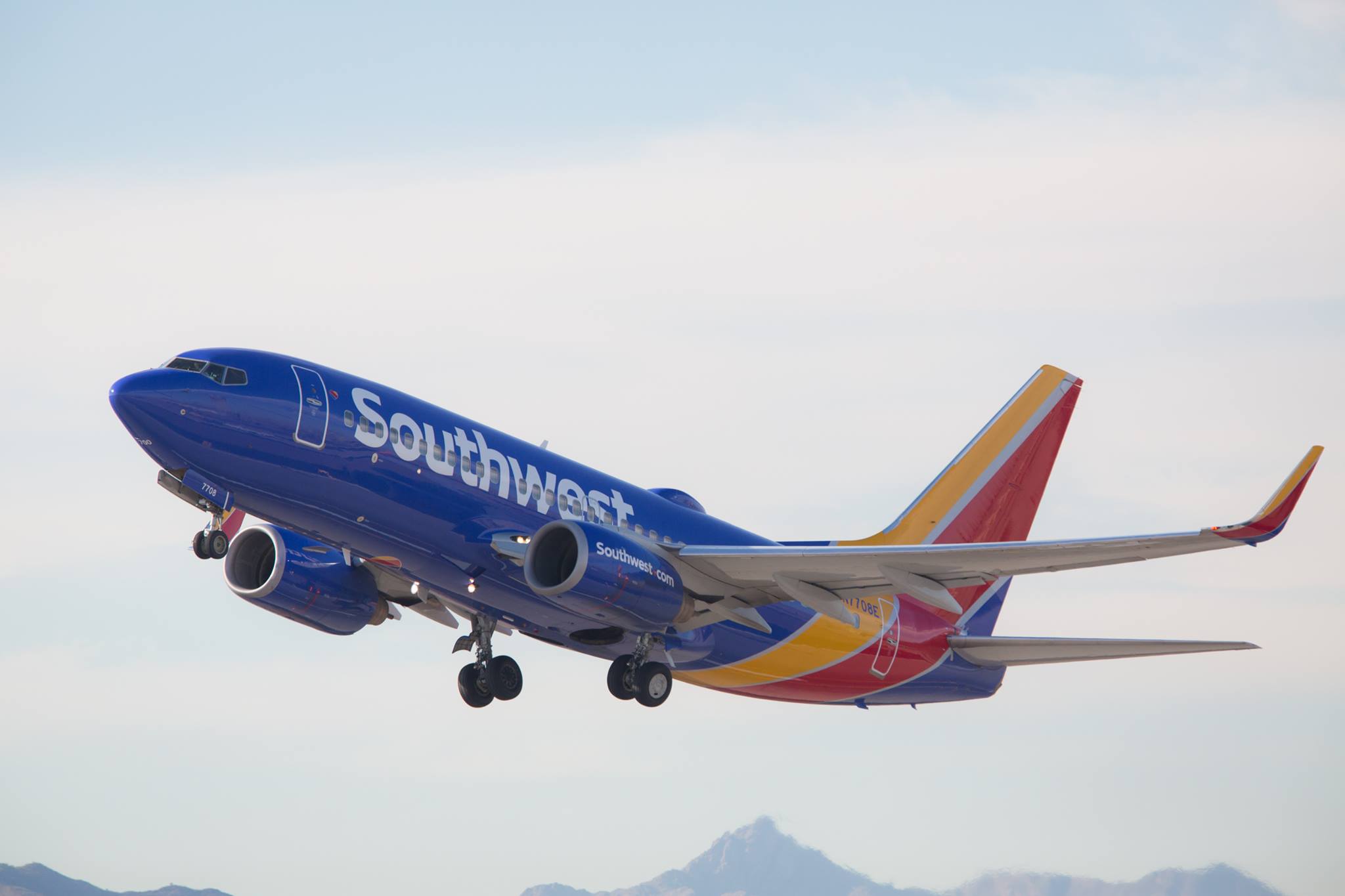Check out the latest Southwest Airlines earnings call transcript.
On Thursday morning, Southwest Airlines (LUV 1.48%) confirmed that it earned a profit for the 46th consecutive year -- an impressive feat in the ultra-competitive airline industry.
Furthermore, Southwest managed to expand its operating margin in the fourth quarter, thanks to an uptick in unit revenue growth. This followed several quarters of margin contraction, which had spooked many investors. Better still, the airline provided a fairly rosy outlook for 2019.
Southwest Airlines results: The raw numbers
|
Metric |
Q4 2018 |
Q4 2017 |
Year-Over-Year Change |
|---|---|---|---|
|
Revenue |
$5.70 billion |
$5.26 billion |
8.4% |
|
Total unit revenue |
14.13 cents |
13.88 cents |
1.8% |
|
Adjusted cost per available seat mile excluding fuel |
9.15 cents |
9.13 cents |
0.2% |
|
Adjusted net income |
$654 million |
$458 million |
43% |
|
Adjusted operating margin |
14.4% |
13.6% |
N/A |
|
Adjusted EPS |
$1.17 |
$0.77 |
52% |
Data source: Southwest Airlines Q4 earnings release.
What happened with Southwest Airlines this quarter?
For much of 2018, a temporary aircraft shortage, stiff competition in some key markets, and a drop-off in bookings following a fatal accident in April all weighed on Southwest's unit revenue. Last quarter, Southwest Airlines continued to bounce back from this slowdown in revenue per available seat mile (RASM), thanks in part to upgraded revenue management tools.
RASM rose 1.8% in the fourth quarter, compared to a 0.7% decline in the first nine months of 2018. Cost inflation slowed as well, enabling Southwest Airlines to expand its operating margin (excluding special items) by nearly 1 percentage point.
Southwest Airlines also continued to make progress toward achieving "ETOPS" authorization -- which is necessary for the carrier's long-awaited Hawaii flights -- during the fourth quarter. The Federal Aviation Administration signed off on all of Southwest's manuals before year-end. That leaves just two relatively simple steps in the process: "tabletop" simulations and validation flights with FAA personnel onboard.
Unfortunately, this process has ground to a halt due to the government shutdown. Southwest Airlines confirmed in the earnings report that it won't be able to receive its ETOPS authorization until the FAA fully reopens.
What management had to say
Despite the challenges Southwest Airlines faced during 2018, long-serving CEO Gary Kelly congratulated his coworkers on another successful year:
We celebrated notable milestones during 2018, including approximately $205 million of pre-tax profits from revenue management enhancements implemented in 2018. ... Our Rapid Rewards program revenues continued to grow, as did revenues from our ancillary products. Tax savings from the 2017 tax reform legislation contributed hundreds of millions toward our earnings and record operating cash flow in 2018.
Kelly went on to praise Southwest Airlines' strong and improving profitability, saying, "We are well-positioned to generate stellar annual after-tax returns on capital in 2019, barring any unforeseen events."
Looking forward
Southwest Airlines' guidance was encouraging, for the most part. Assuming the government shutdown ends soon, the company expects RASM to rise 4% to 5% in the first quarter -- despite a roughly 1-percentage-point headwind from the timing of Easter and shutdown-related damage that has already been done. (The carrier estimates that it has lost $10 million to $15 million in revenue this month due to the shutdown.) That would be a big improvement over Southwest's 2018 unit revenue trend.

Southwest Airlines' RASM growth is set to accelerate dramatically this quarter. Image source: Southwest Airlines.
On the other hand, Southwest's forecast calls for nonfuel unit costs to surge 6% this quarter. This severe cost increase would be only partially offset by a slightly lower average fuel price.
This projected unit cost spike -- which is expected to continue into the second quarter -- is being driven by start-up costs related to entering the Hawaii market and the timing of maintenance events, along with more typical cost pressures. Fortunately, these headwinds will dissipate quickly, leading to roughly flat nonfuel unit costs in the second half of 2018.
Even with a big uptick in nonfuel unit costs, the company is on pace to expand its profit margin again in the first quarter. And with cost trends on track to improve as the year progresses, profit growth could continue to accelerate at Southwest Airlines.






